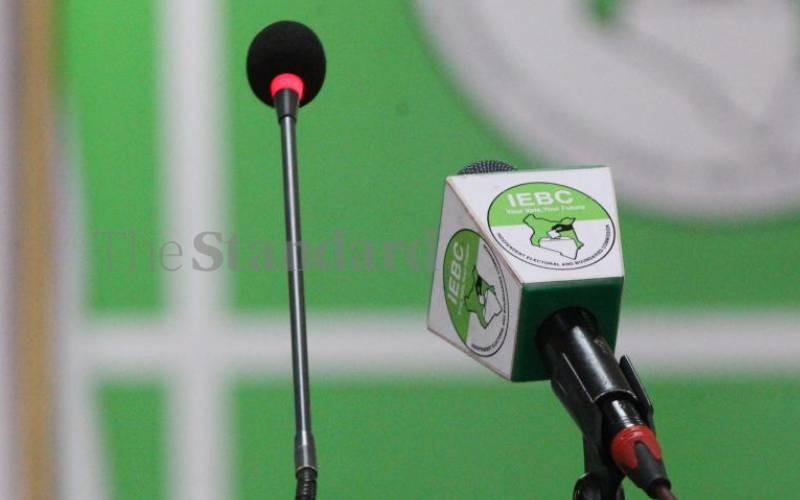My heart was recently moved by a simple statement made by one young boy, with regard to the public/private schools criteria for Form One selection. The distraught boy stated with clarity of thought and heaviness of heart, "I am not a private child!" And how true.
There are no private or public children in this country – only Kenyans. Their future is staked, not on whether they attend private or public schools, but rather on what opportunities come their way, and how they utilise those opportunities. Unfortunately, the nature of life is such that we neither can nor will ever all have equal or similar opportunities.
The fact of our socio-economic disparity in Kenya is well documented and terribly lamentable; mainly thanks to our many historical and political injustices. Our pork-barrel politics has ensured that certain regions of this nation have remained almost totally underdeveloped while others could pass for first world. Hence the gap between the rich and the poor is such that the rich are really rich and the poor are truly poor. How to bridge this gap is the challenge facing our leaders and policy makers.
In the education sector, how to ensure that students from across the board have access to quality education, has been a logistical nightmare. The government has therefore resorted to affirmative action to try and ensure that good schools are not dominated by the privileged few. Thus a fairly complex system has been developed for Form One selection. This entails admission into either National, County or District Day schools depending on the candidate's school choices captured during the year the candidate sat for KCPE. Slots in National Schools are distributed based on both performance and affirmative action thus enabling each district to get a candidate selected to a National School. Up to this point, many seem to be agreed that some level of affirmative action is necessary to bring on board candidates from far flung counties who may not have adequate resources to perform as well as their counterparts in fairer regions.
The challenge, however, seems to arise when the criteria for affirmative action is broadened to include the category of school a child attended – whether private or public. The proponents have argued that private schools are better endowed with facilities and resources than public ones. Accordingly, it is assumed that they enjoy a comparative advantage in exam performance. This has been disputed by many who point out that not all private schools are resource rich. There are many so-called private schools across this nation that are in appalling state. Their only purpose for existence seems to be to extort money from ignorant parents. Others are the feeble efforts of determined Kenyan entrepreneurs struggling to eke a living while providing some service to the community. Conversely, there are public schools that enjoy excellent facilities, resources, and teachers. They outshine many high cost academies on every front. It is, therefore, an injustice to simply design a computerised selection system that automatically discriminates against private school candidates in the name of affirmative action.
Matters are compounded when this discrimination is carried through to university selection. It means that those unfortunate "private" children who miss admission to public schools and end up in private secondary schools may never see the inside of a public university!
This is made worse by the fact that even employers, whether consciously or unconsciously, tend to view public university graduates more favourably than private ones. Whatever else we may call it, this is the height of procedural injustice. It is reverse discrimination, which has been shown by some studies to breed social tension. It has been argued that it hinders reconciliation, replaces old wrongs with new ones, undermines the achievements of minorities, and encourages individuals to identify themselves as disadvantaged, even if they are not. Indeed, in Kenya, we have seen parents transfer or register their children for exams in far flung public schools with the hope that they will stand a better chance of being selected to national schools.
It follows therefore that, whereas affirmative action is important, it is not the all and in all answer to socio-economic disparities. There are critical factors that need to be considered with regard to its implementation in the education sector. In the USA for example, the Supreme Court has severally placed important limitations on affirmative action programmes.
In 2003, in two landmark rulings involving admission to the University of Michigan and its law school, the US Supreme Court reaffirmed the constitutionality of affirmative action but ruled that race could not be the preeminent factor in such decisions. It appears to me that in Kenya's education system, public vs private schooling must be discontinued as a criteria for affirmative action. For there are no private or public children in Kenya.
 The Standard Group Plc is a
multi-media organization with investments in media platforms spanning newspaper
print operations, television, radio broadcasting, digital and online services. The
Standard Group is recognized as a leading multi-media house in Kenya with a key
influence in matters of national and international interest.
The Standard Group Plc is a
multi-media organization with investments in media platforms spanning newspaper
print operations, television, radio broadcasting, digital and online services. The
Standard Group is recognized as a leading multi-media house in Kenya with a key
influence in matters of national and international interest.
 The Standard Group Plc is a
multi-media organization with investments in media platforms spanning newspaper
print operations, television, radio broadcasting, digital and online services. The
Standard Group is recognized as a leading multi-media house in Kenya with a key
influence in matters of national and international interest.
The Standard Group Plc is a
multi-media organization with investments in media platforms spanning newspaper
print operations, television, radio broadcasting, digital and online services. The
Standard Group is recognized as a leading multi-media house in Kenya with a key
influence in matters of national and international interest.









